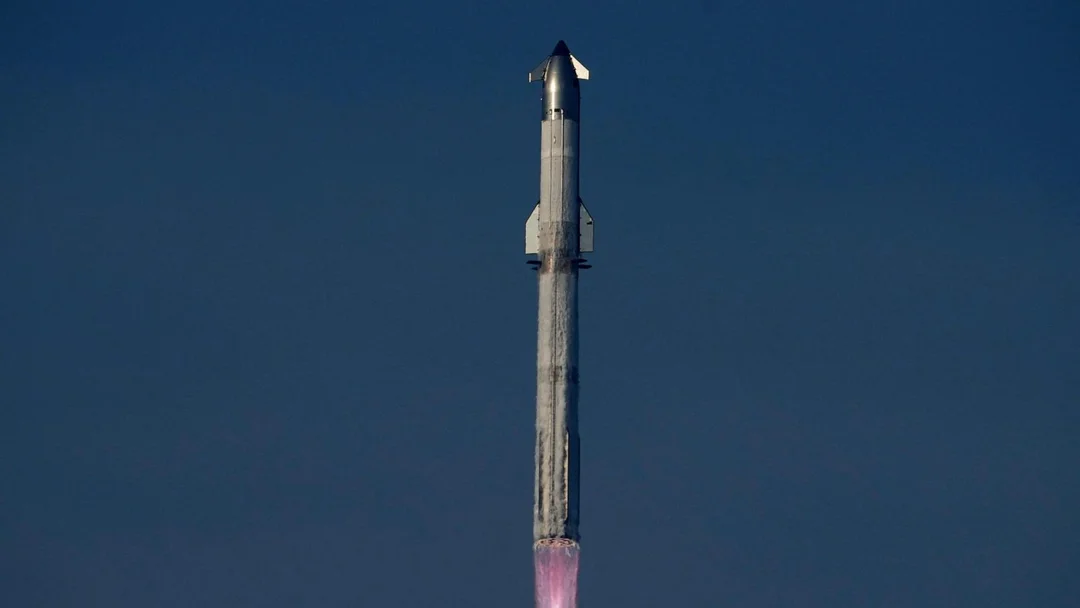
SpaceX’s Starship Flight 9: Reaching Space, Facing Setbacks, and the Path to Mars
SpaceX's Starship, the ambitious project aiming to revolutionize space travel, experienced another eventful test flight on Tuesday, May 27th. While the launch of Flight 9 marked advancements, including the first significant reuse of Starship hardware, it ultimately ended with the loss of both the booster and the spacecraft. This article synthesizes reports to provide a comprehensive overview of the mission's ups and downs.
The 403-foot (123-meter) Starship, lifting off from Starbase in South Texas, successfully executed its two-stage separation, with the upper stage reaching space – a notable improvement over previous attempts. Elon Musk, CEO of SpaceX, acknowledged this progress in a post on X, stating, "Starship made it to the scheduled ship engine cutoff, so big improvement over last flight!" He also noted the absence of significant heat shield tile loss during ascent. 
However, challenges quickly emerged. The booster stage, critical for reentry, was lost during its return to the atmosphere. Furthermore, the payload door failed to open, preventing the planned deployment of eight Starlink simulator satellites. According to SpaceX flight commentator Dan Huot. "Not looking great with a lot of our on-orbit objectives for today."
The upper stage, after reaching space, also encountered difficulties. A fuel system leak caused the spacecraft to spin uncontrollably, compromising its attitude control. Consequently, a planned engine relight test was abandoned. As a result, the spacecraft experienced a "rapid unscheduled disassembly," disintegrating over the Indian Ocean during reentry. "Leaks caused loss of main tank pressure during the coast and re-entry phase. Lot of good data to review" Musk said after the setback. 
Despite these setbacks, SpaceX remains committed to the Starship program. The company emphasized the importance of learning from each test flight, stating, "With a test like this, success comes from what we learn, and today’s test will help us improve Starship’s reliability as SpaceX seeks to make life multiplanetary." Musk even suggested a faster launch pace, aiming for a Starship launch every three to four weeks for the next three flights.
The Federal Aviation Administration (FAA) is investigating the incident to determine the cause of the failure and assess its potential impact on future launches. The FAA stated, "The FAA is aware an anomaly occurred during the SpaceX Starship Flight 9 mission...and is actively working with SpaceX on the event."
Starship is NASA's critical component for manned missions to the moon. Despite the need for major strides over the coming year by SpaceX, this mishap is a developmental one. "Developmental testing by definition is unpredictable," stated SpaceX.
While Flight 9 didn't achieve all its objectives, it provided valuable data and experience. The mission served as a crucial step in SpaceX's iterative development process, refining the Starship system for future missions to the moon, Mars, and beyond. The lessons learned from Flight 9 will undoubtedly contribute to the ongoing evolution of this ambitious spacecraft.
Will SpaceX's rapid iteration approach prove successful in overcoming these challenges? What impact will these setbacks have on NASA's timeline for lunar missions? Share your thoughts and predictions in the comments below!
Related issues news
When is Starship Flight 9's launch date?
The ninth flight test of Starship is preparing to launch as soon as Tuesday, May 27. The launch window will open at 6:30 p.m. CT. A live webcast of the flight test will begin about 30 minutes before liftoff, which you can watch here and on X @SpaceX. You can also watch the webcast on the X TV app.
What happened to Starship Flight 9?
SpaceX lost contact with Starship while conducting its ninth uncrewed test flight of the launch system, the most powerful ever constructed. The spacecraft likely broke apart over the Indian Ocean after losing control upon reentry to Earth.
Who is Elon Musk?
Elon Reeve Musk (/u02c8iu02d0lu0252n/ EE-lon; born June 28, 1971) is a businessman known for his leadership of Tesla, SpaceX, and X (formerly Twitter). Since 2025, he has been a senior advisor to United States president Donald Trump and the de facto head of the Department of Government Efficiency (DOGE).
What time is the Starship 9 launch?
When is the launch and how can I watch it? The launch window, which lasts for 60 minutes, opens at 7:30 p.m. Eastern time for the ninth test flight of Starship to lift off from SpaceX's Starbase site in South Texas.